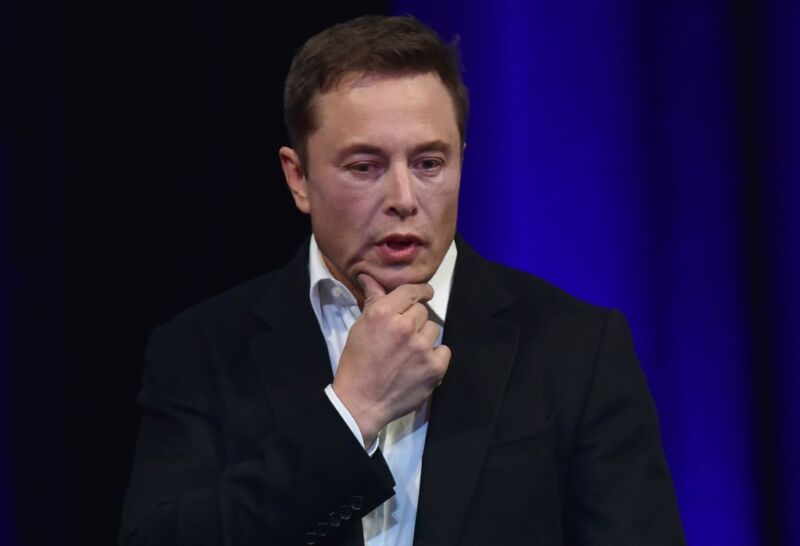
Elon Musk has seemingly decided that one way to inspire confidence in Twitter as an advertising platform is to become an advertiser himself. Yesterday, CNBC reported that SpaceX purchased one of Twitter’s premium advertising packages—when typically SpaceX rarely invests in Twitter advertising—as Musk’s other company plans to begin advertising Starlink satellite Internet to customers in Spain and Australia. According to internal documents CNBC reviewed, SpaceX has so far spent $160,000 on the Twitter ad campaign and in total could end up investing up to $250,000.
According to Musk, SpaceX buying this advertising package is nothing special. The CEO of both SpaceX and Twitter took issue with CNBC describing the advertising investment as “large.”
“SpaceX Starlink bought a tiny—not large—ad package to test effectiveness of Twitter advertising in Australia & Spain,” Musk tweeted. “Did same for FB/Insta/Google.”
While Musk more recently has been dealing with Twitter’s advertising woes, it’s true that Musk has also been motivated this year to grow Starlink’s customer base. In February, Forbes reported that Starlink could be generating $25 million a month if there were really 250,000 people using it, which Musk had indicated that there were. That could yield $300 million annually, allowing SpaceX to quickly recoup costs of launching the service, so long as Musk kept finding new customers, Forbes said.
“Clearly there’s a real business here, and additional customers will continue to amortize the company’s costs faster over time,” Forbes reported, crediting Musk with launching premium Internet services that could make up for SpaceX’s debt even faster. Those premium options ranged from SpaceX newly offering $500 per month higher-bandwidth Internet services for rural businesses to most recently unveiling $5,000 per month Internet services for yachts and oil rigs.
Despite SpaceX’s interest in reaching more customers, Twitter has rarely been considered a source of new customers by SpaceX. Current and former SpaceX employees told CNBC that “SpaceX has not typically purchased large advertising packages from Twitter”—until now.
It could be that Musk has newly learned from his position inside the social platform precisely how Twitter could help his other business. Or else perhaps this large advertising buy could be Musk’s way of showing that Twitter is still a viable platform for advertisers, once again putting his money where his mouth is.
SpaceX did not immediately respond to Ars’ request for comment. Twitter has reportedly stopped operating its communications office.
How big was SpaceX’s Twitter advertising package?
Musk has disputed reports commenting on the large size of the advertising package that SpaceX purchased. According to CNBC, the advertising package is a campaign known as a Twitter “takeover.”
There are two kinds of “takeover” packages advertisers can purchase from Twitter. One is a trend takeover, where brands can place an ad next to trending topics. The other is a timeline takeover, where brands are assured their ads will be at the top of timelines. A timeline takeover makes it so that a brand’s ad is the first ad that users see when they log in.
CNBC reported that SpaceX purchased the timeline takeover, which Twitter describes in its marketing materials as “the equivalent to a primetime TV ad or a billboard in a location where millions of people will see your brand’s ad.”
Musk said that the approximately $160,000 that SpaceX spent is “tiny” in his books, but in terms of how Twitter describes its own advertising packages, the timeline takeover does seem to be among the biggest ad packages that SpaceX could have bought. On one of Twitter’s business pages, Twitter describes the takeover as granting advertisers access to “the most premium, mass-reach placements.”
As CNBC noted, regardless of whether the SpaceX advertising investment is considered small or large, it’s not big enough to make up for all the advertisers withdrawing from Twitter. For someone like Musk who’s forced to look at the big picture, it probably does seem quite small.
Musk insists that SpaceX has invested in advertising for Starlink across all the major social platforms, and so it’s possible that SpaceX doing such big business with Twitter for the first time has little to do with Musk owning the platform and more to do with a larger bid now to drive Starlink’s growth by any means possible.
Adjusting to his new Twitter role publicly, Musk continues to show that he seems to have little understanding of what Twitter’s marketing value is, despite SpaceX becoming one of Twitter’s biggest advertisers. Many social media managers scoffed when Musk tweeted and then deleted a tweet claiming that “Twitter drives a massive number of clicks to other websites/apps. Biggest click driver on the Internet by far.” Before Musk’s tweet was deleted, Twitter users added context, fact-checking Musk and clarifying that Twitter drives the least amount of clicks compared to other social networks.
One well-known former employee who worked at Twitter from 2009 to 2014, Claire Diaz-Ortiz—perhaps best known for getting the Pope to join Twitter—joined those calling Musk out for “lies.”
“This is 100 percent false, and Twitter knows it,” Diaz-Ortiz tweeted, clarifying that Twitter doesn’t sell ads on clicks, because it knows it can’t compete with platforms like Facebook as a traffic driver. “Twitter has other key strengths. (And marketing is way more than clicks),” she said, schooling Twitter’s new owner.
https://arstechnica.com/?p=1897737

